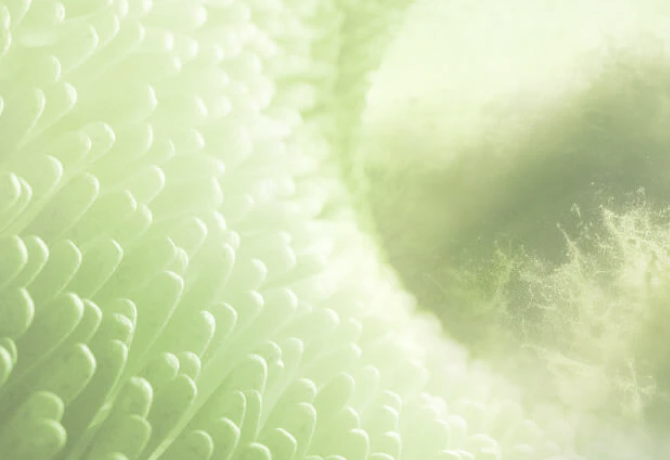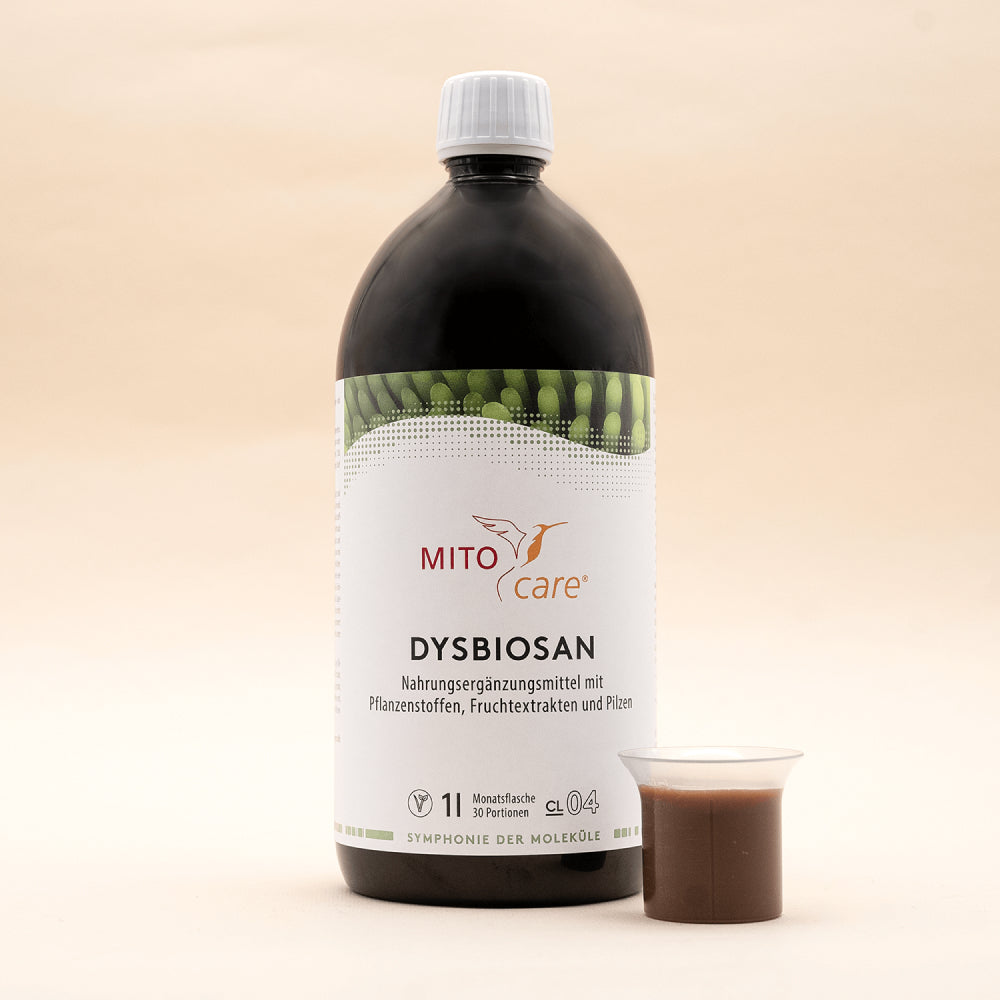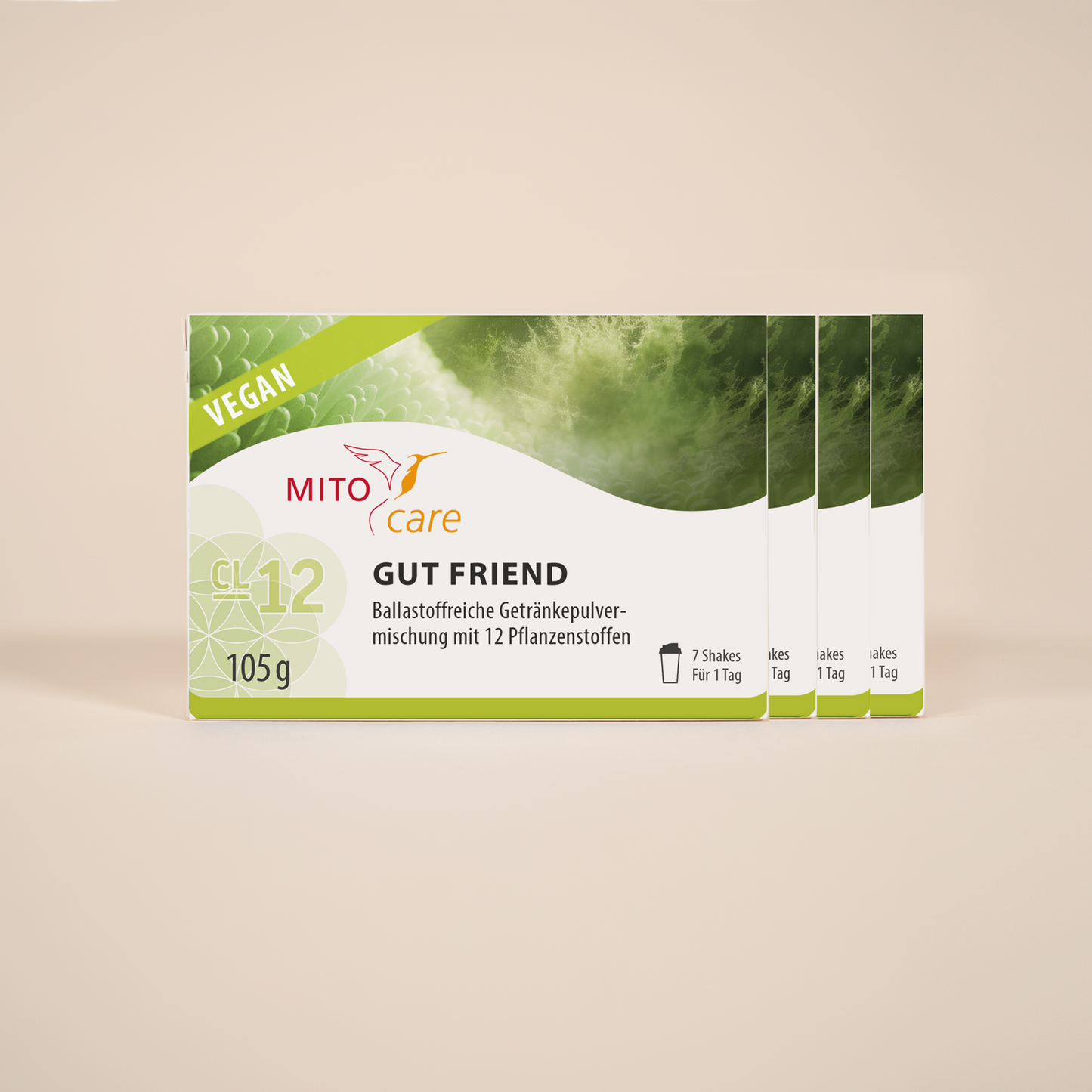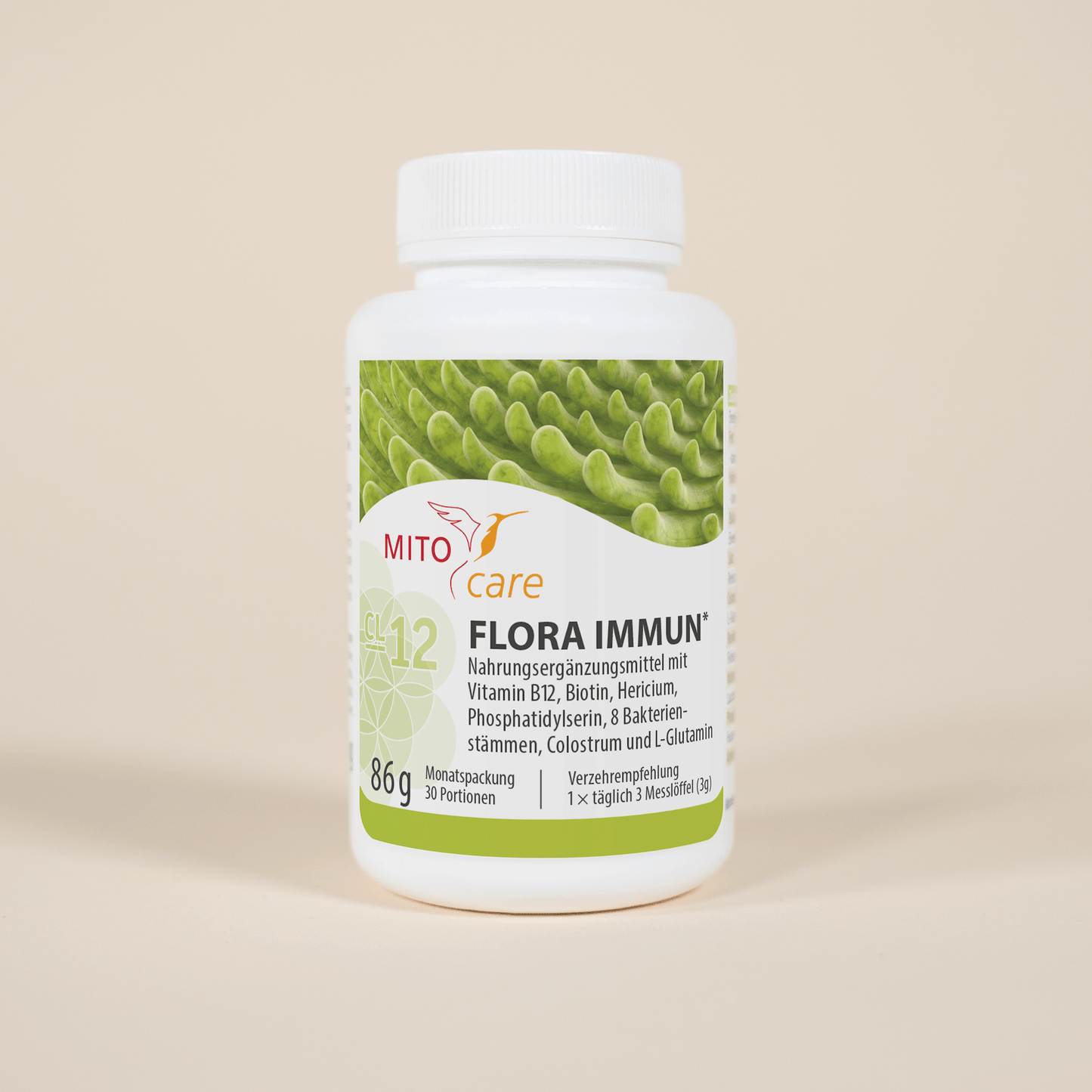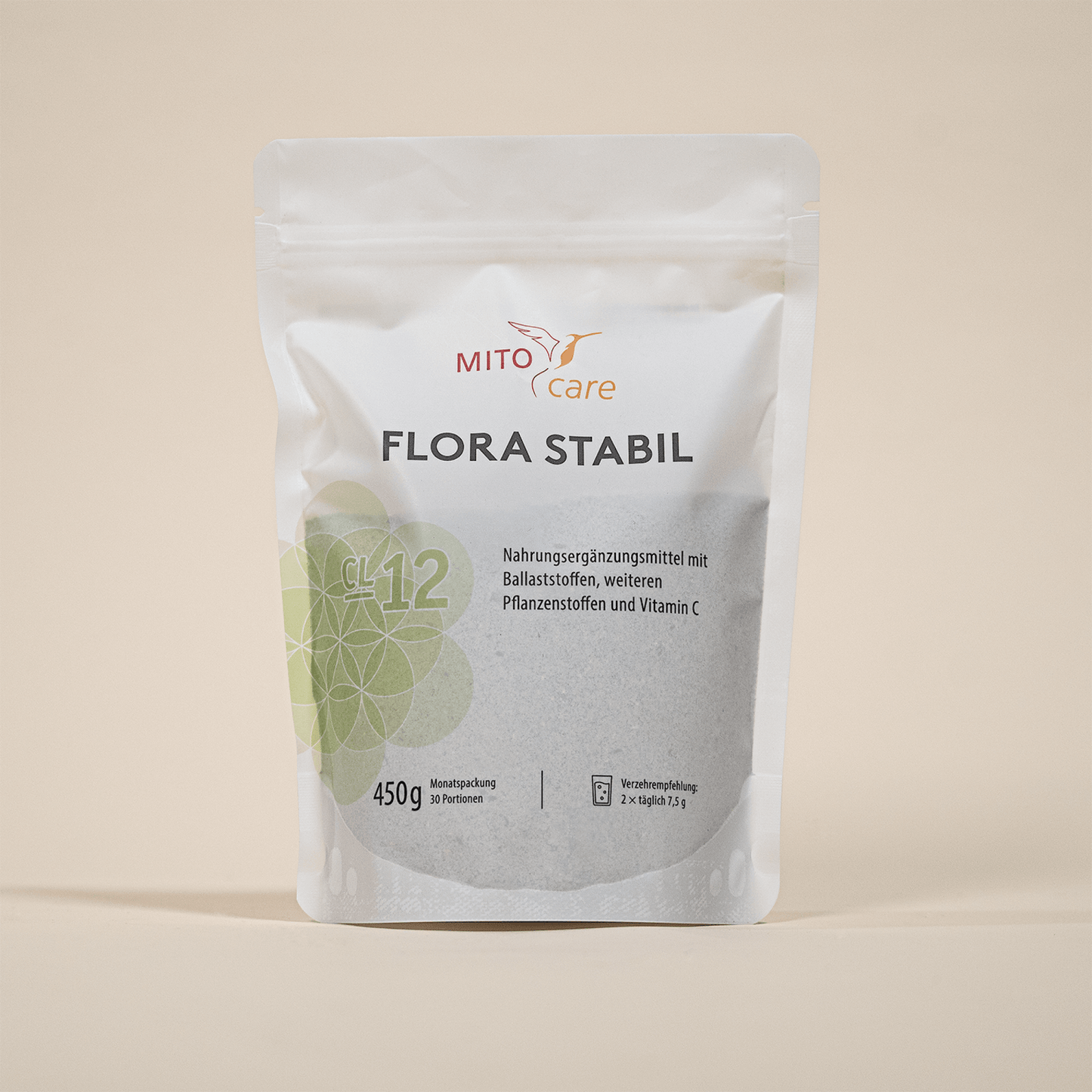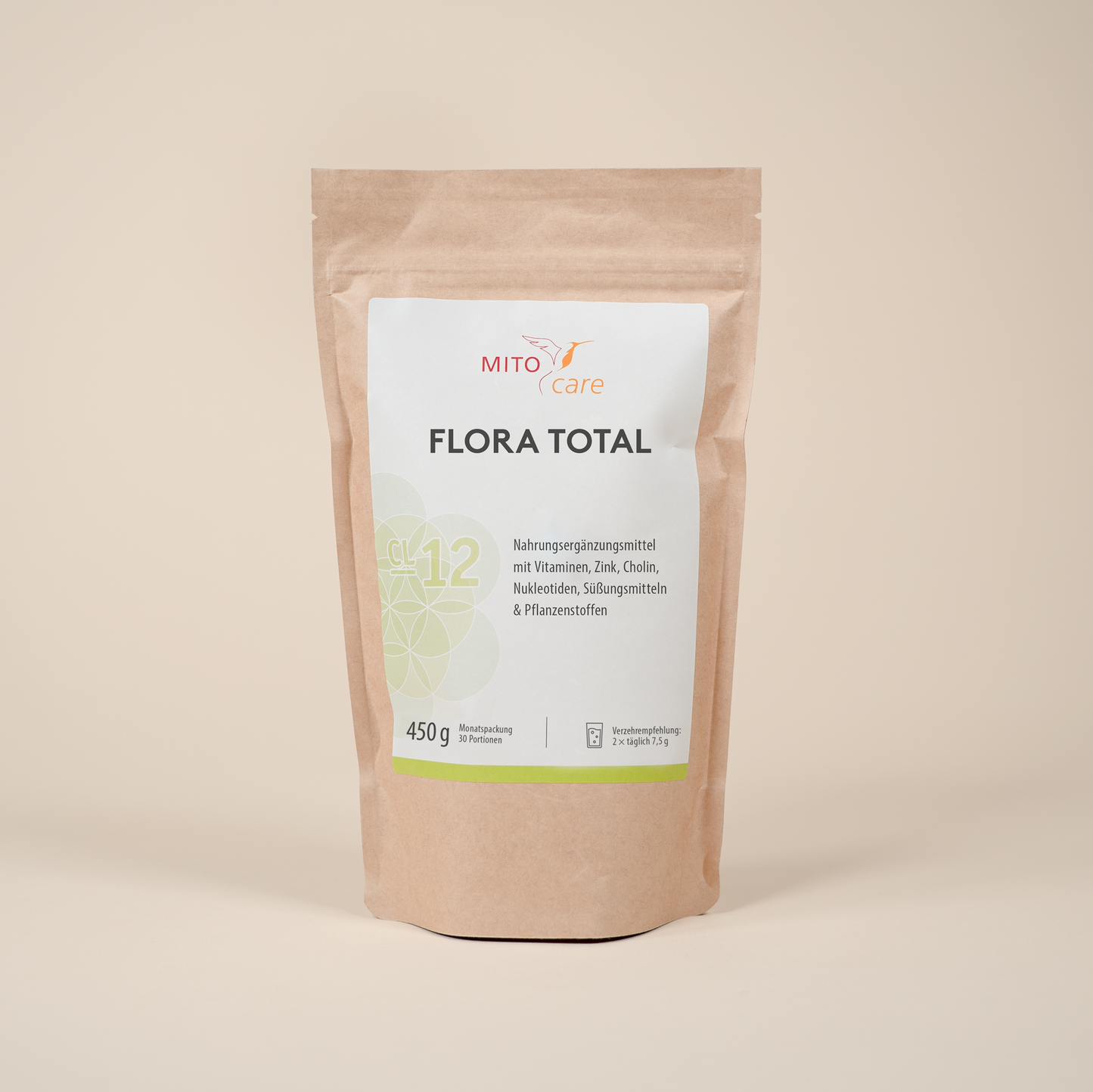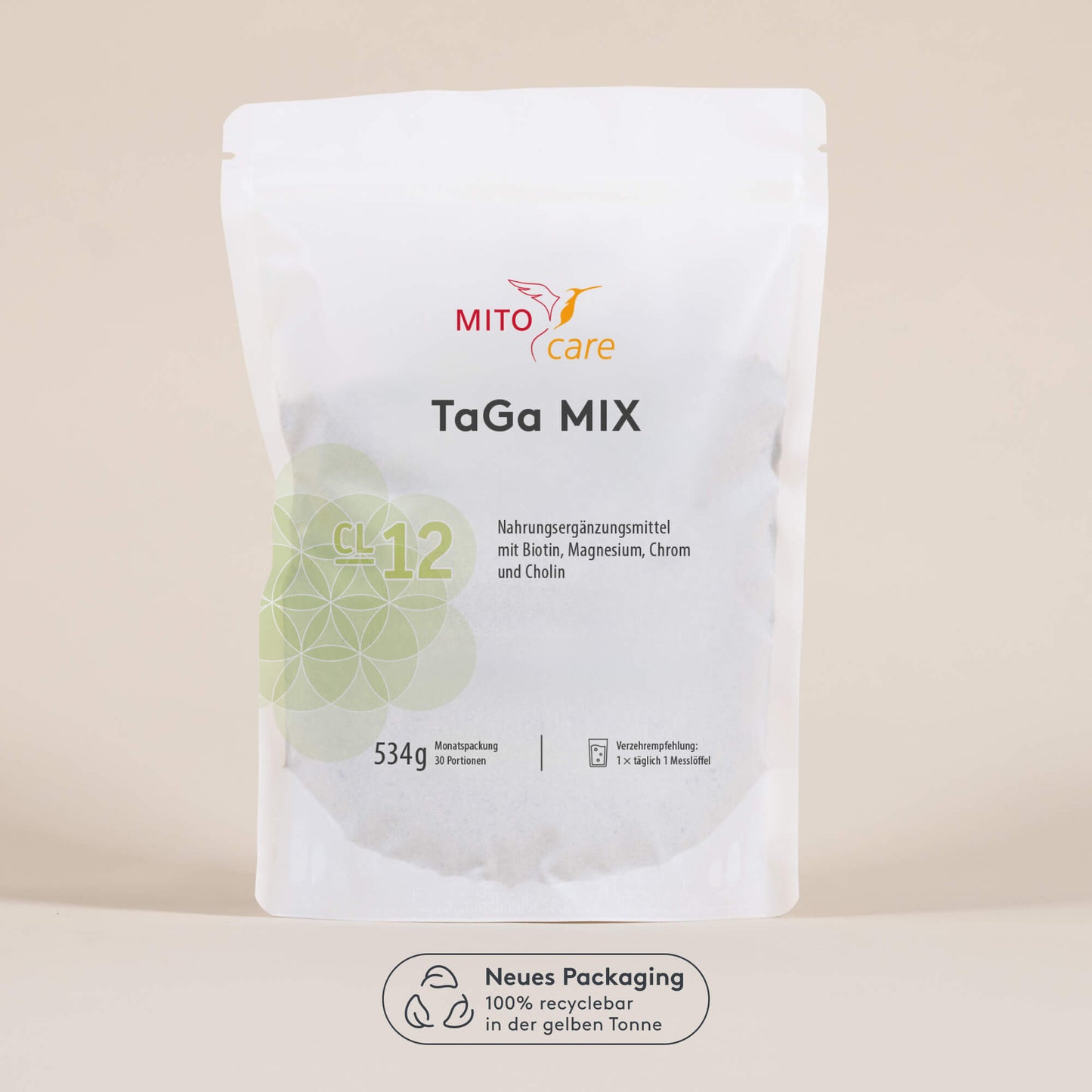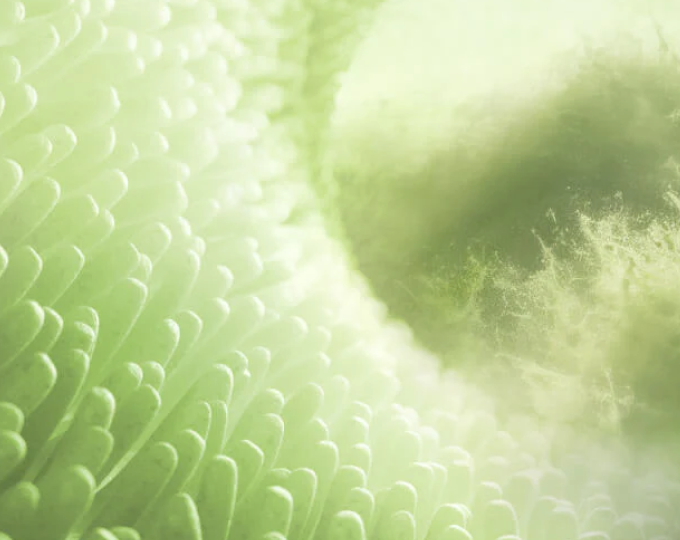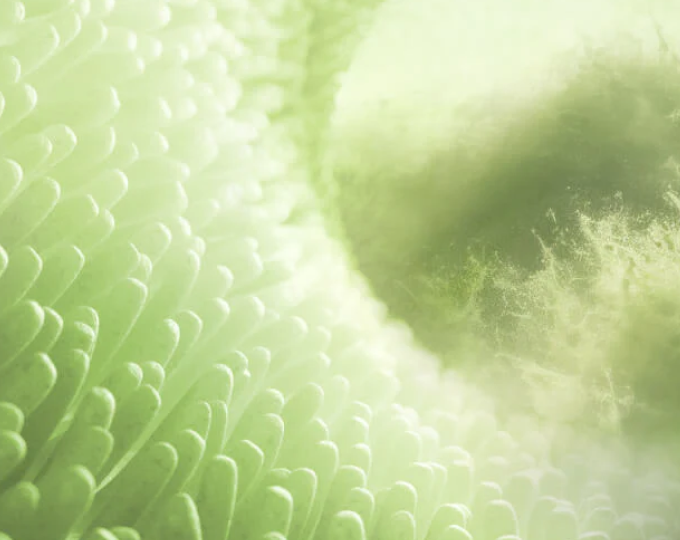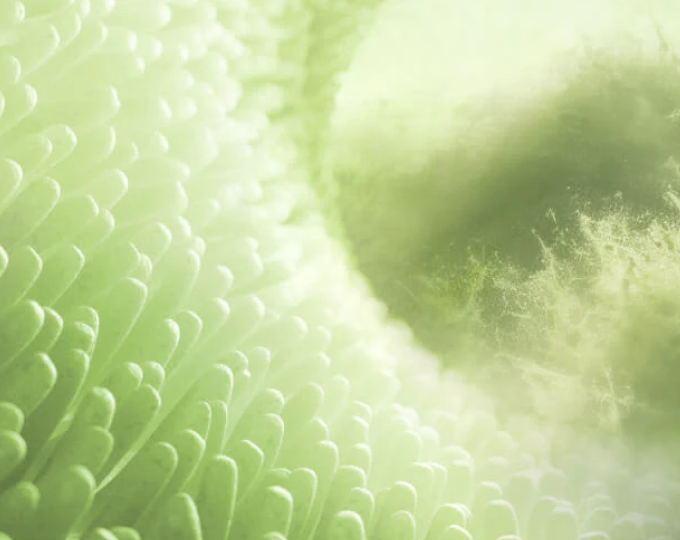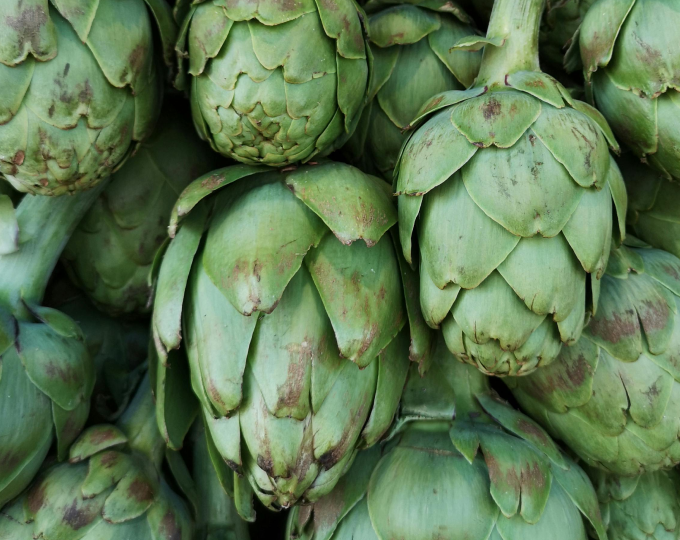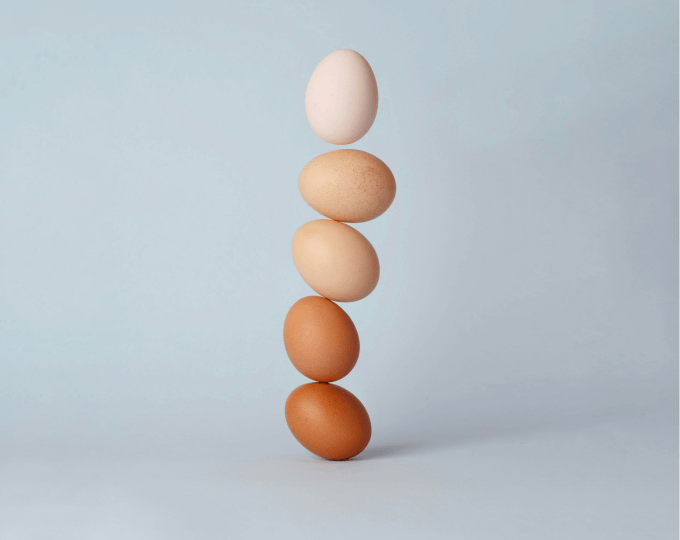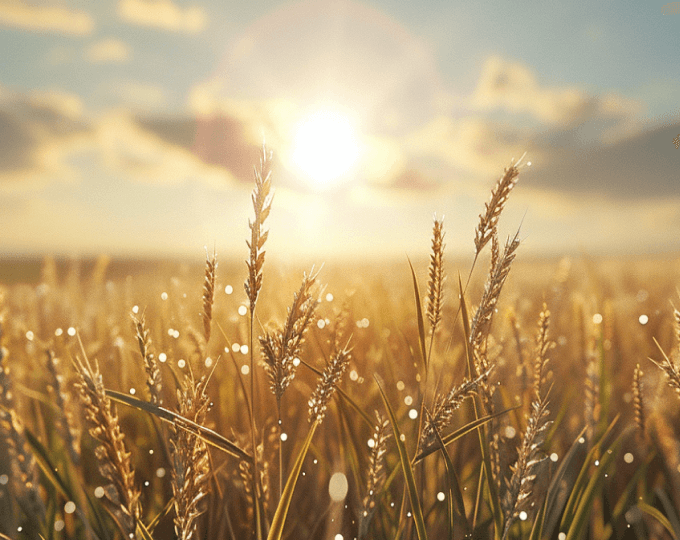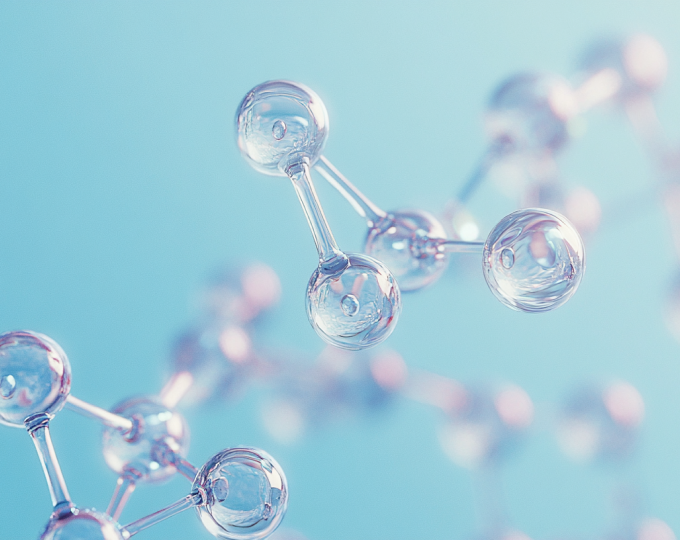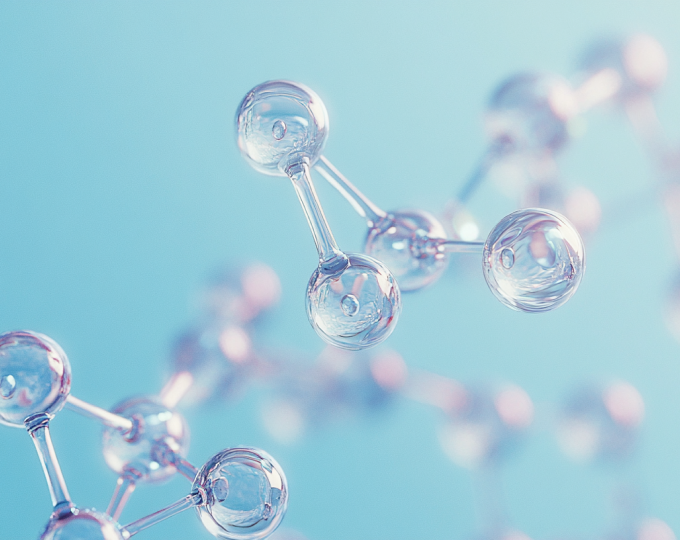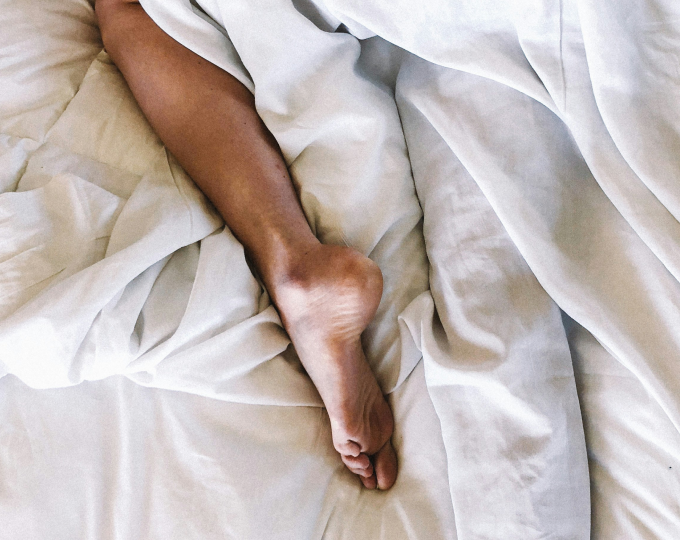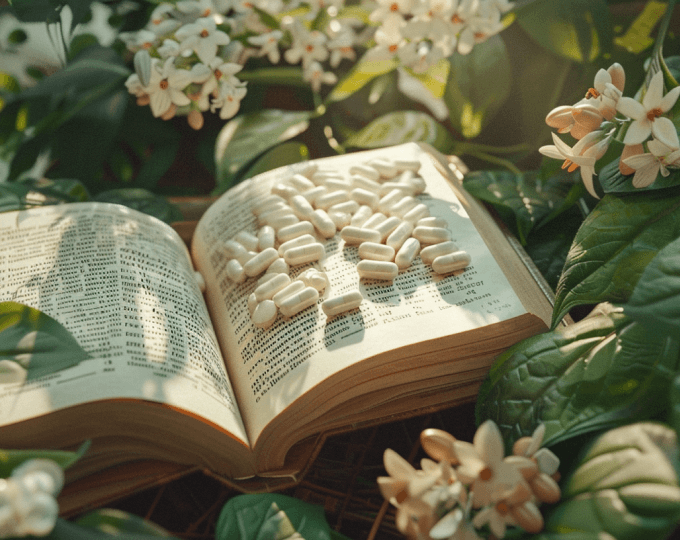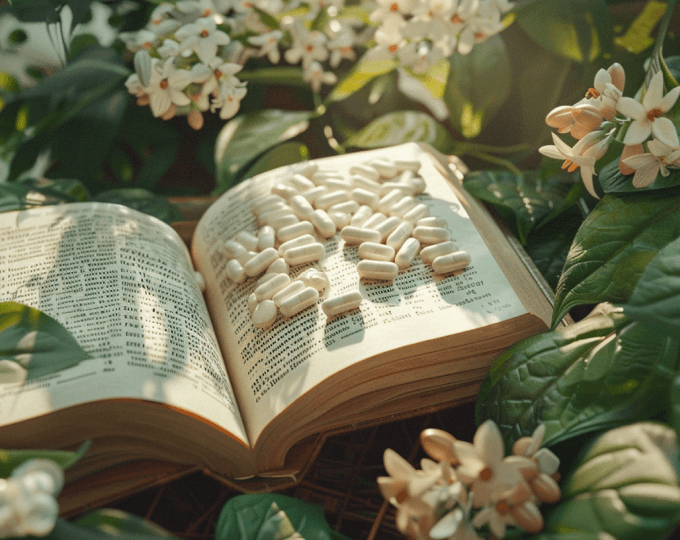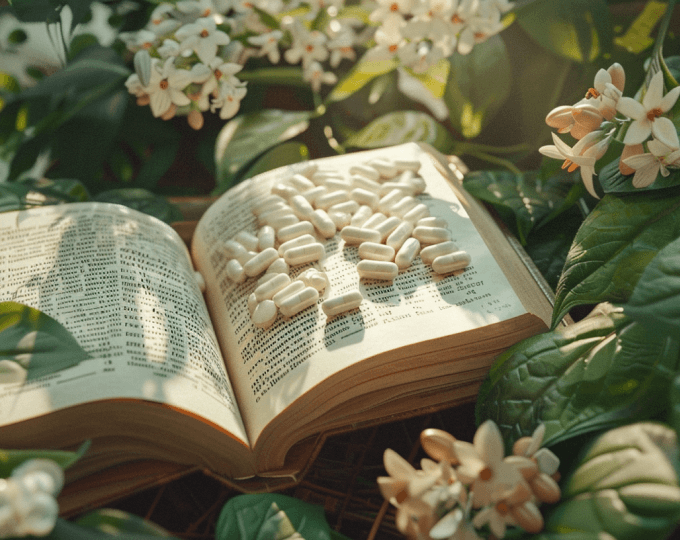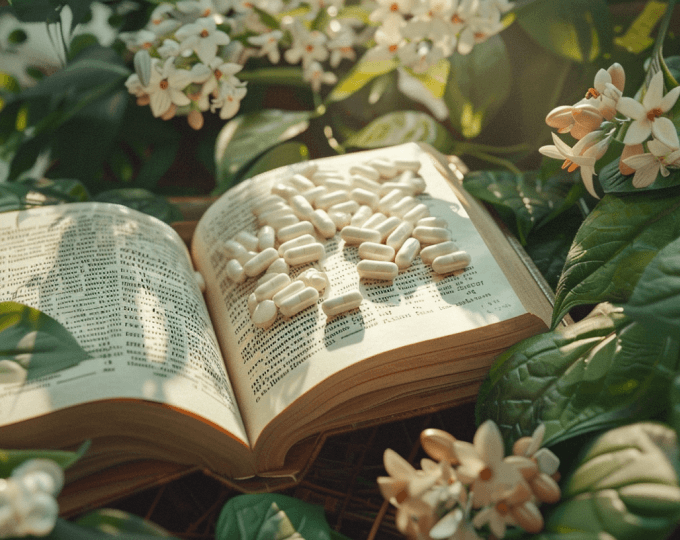Themen dieses Blogartikels:
Table of contents
- What is histamine and what does it do?
- How is histamine produced in the body?
- What is histamine intolerance?
- This is how histamine intolerance manifests itself
- What are the possible causes of histamine intolerance?
- The role of the DAO
- Corona as a trigger?
- How do you know if your histamine levels are too high?
- How to get histamine problems under control
- Tip 1: Promote intestinal health and strengthen the hormonal system
- These substances are important
- Tip 2: Rethink your diet
- Can I eat vegan despite histamine intolerance?
- Tip 3: Reduce stress
- Sources & Bibliography
This blog article is an expert interview
Expert interview with Olivia Hirschberg
Olivia Hirschberg is an expert in the field of hormones. In our interview, she explains what histamine is and how histamine intolerance occurs. Our hormone expert also reveals how those affected can enjoy their lives without restrictions despite histamine intolerance.


What is histamine and what does it do?
Histamine is a substance that occurs in various foods, but also in the human organism. As a tissue hormone and neurotransmitter, histamine is found primarily in mucous membranes, for example in the lungs, brain, gastrointestinal tract, prostate, vagina or bladder. The hormone fulfils various functions, including the following:
- It regulates the production of stomach acid and stimulates digestion
- As a messenger substance, it is involved in various processes such as the immune system or the sleep-wake rhythm
- Histamine dilates the blood vessels and increases local blood supply
How is histamine produced in the body?
The body's own histamine is produced from the amino acid histidine, for example as a reaction to inflammation or to start various processes in the organism. When you have a cold, cough or an allergy, the substance is produced and released in greater quantities.
Example: In hay fever, the mast cells of the immune system release messenger substances such as histamine and react with them to the allergens entering the body.
If the substance is no longer needed, enzymes such as diamine oxidase (DAO) in the intestine, tissue and blood, or histamine N-methyltransferase (HNMT) in the liver, bronchial mucosa and central nervous system ensure that it is broken down.
"Histamine is our friend who fights against pathogens with us," says Olivia Hirschberg, a naturopath from Munich. She helps her patients achieve more balance in their hormonal system. She is very familiar with histamine and knows that there are many misconceptions about the tissue hormone and, in particular, histamine intolerance.
What is histamine intolerance?
Histamine intolerance, also known as HIT, is a metabolic disorder in which the enzymes involved in the breakdown of histamine do not function properly. This results in an excess of histamine, which triggers various symptoms that can affect you in everyday life.
This is how histamine intolerance manifests itself
Typical symptoms of the disease include:¹
- rashes and skin redness
- hives
- itching
- stomach pain
- Diarrhea
- nausea
- Headache
- shortness of breath
- circulatory problems
- flatulence
- constipation
- restlessness
- heart palpitations
Other symptoms can include migraines , brain fog and depressive moods, a dimmed feeling that patients often describe as cotton wool in the head. Women with histamine intolerance often suffer from period pain or endometriosis.
What are the possible causes of histamine intolerance?
When it comes to the question of what triggers an excessive reaction to histamine, the causes play a major role: "You have to differentiate whether the cause is genetic, because the enzymes DAO and HNMT are missing, or whether, in the worst case, there is mast cell activation. In this disease, the immune system no longer stops releasing histamine," says Olivia.
The third possible cause is acquired histamine problems, which arise, for example, as part of a vegan diet. We often eat things that are unsuitable for our genetics. The hormone expert explains: "Due to our genetics, we Europeans do not have a high tolerance for foods containing histamine. At the same time, we often rely on the wrong nutritional approaches and consume foods such as soy, avocado or chickpeas, which fly halfway across the globe because they do not grow here. This is one of the reasons why histamine intolerances are increasing."²
The Role of the DAO
A functioning DAO is a prerequisite for histamine to be reliably regulated. Since the enzyme is formed in the intestine, the main causes of histamine problems are often found there. The following factors can disrupt the work of your diamine oxidase:
- stress
- Massive hormonal fluctuations
- allergies
- autoimmune diseases
- Leaky Gut
- medication intake
Some of the triggers for histamine intolerance today are environmental factors such as stress or poor diet. For example, a nutrient deficiency can promote histamine intolerance, as diamine oxidase is formed by certain minerals and nutrients .
Corona as a trigger?
"Since the corona pandemic, regardless of whether you have been vaccinated or recovered, there can be a strong activation of mast cells. This causes the body's immune system to release increased amounts of histamine, which leads to persistent symptoms in some patients," says Olivia.³
One problem with COVID-19 is that the virus's spike protein can affect the immune system. The body produces spike proteins for a period of time to generate an immune response. This immune response can lead to increased histamine release to limit potential damage and eliminate the spike proteins. In such cases, food is not the main problem, but merely intensifies the symptoms. It is therefore always important to take a closer look at the immune system when symptoms occur.
How do you know if your histamine levels are too high?
"If symptoms are present and histamine problems are suspected, a laboratory test definitely makes sense," says Olivia, adding: "The diagnosis of histamine intolerance can only be put together from several puzzle pieces and this requires several tests. That's why I do the full program when I check histamine with my patients. For 130 to 150 euros, we can measure all of the body's own immune markers in order to better isolate the problem."
Olivia generally recommends not relying solely on histamine and DAO levels, as these can be unremarkable even in the case of intolerance. It is important to carry out a differentiated measurement of fasting blood and urine and a stool test. Mast cells should also be examined. An analysis of the intestinal microbiome is also recommended in order to rule out diseases such as leaky gut or small intestinal bacterial overgrowth.
How to get histamine problems under control
Have you had your suspicion of histamine intolerance confirmed and know what is causing your symptoms? Then there are various treatment options that are best tried in consultation with experts like Olivia. The following three tips are easy to implement in everyday life and can help to reduce intolerance reactions.
Important: If symptoms are particularly severe in connection with allergies, it is advisable to take medication such as antihistamines during acute phases. Talk to your doctor about this.
Tip 1: Promote intestinal health and strengthen the hormonal system
"We need an intact gut and an intact hormonal system. These are the most important pillars of the immune system," emphasizes hormone expert Olivia. You can stabilize both by paying attention to cortisol and melatonin , for example. In concrete terms, this means avoiding stress and paying attention to sleep hygiene (see also tip 3). These are the simplest ways to reduce the body's own release of histamine.
These substances are important
If you want to stabilize the mast cells, vitamin C, zinc, querectin and frankincense are among the options.
To strengthen diamine oxidase, you should make sure to consume co-factors. These include:
- vitamin C
- zinc
- vitamin B6
- copper
Probiotics are considered to be important helpers for the intestinal flora. However, you should make sure that the products you use do not produce histamine.
Tip 2: Rethink your diet
"It is important to understand that we are genetically wired differently than, for example, people in Asia, whose metabolism and gut microbiome are different from ours. This is why Europeans often have a low histamine tolerance," explains Olivia.
Many of her patients are surprised that not only foods with high histamine content⁴ such as cheese, wine or too much salt cause problems, but also supposedly healthy foods.
Even though chickpeas, legumes, tofu, pineapple or papaya look delicious and contain many nutrients, they are not suitable for the gut microbiome of people in Europe. "A chickpea salad or tofu every now and then is fine, but should not be the main part of the diet," recommends Olivia.
Can I eat vegan despite histamine intolerance?
Anyone who has a histamine intolerance and wants to eat a vegan diet should at least be cautious with nuts and pulses or resort to almonds or pistachios. Vitamin C does not always have to come from tropical fruits. Local cabbage varieties are also suitable sources.
To ensure adequate protein supply, Olivia advises those affected to supplement their diet with high-frequency amino acids such as isolated amino acids. Protein shakes based on whey protein or pea protein are unsuitable.
Fermented foods such as sauerkraut or kimchi contain good lactic acid cultures, but can be detrimental to the immune system in cases of intolerance, allergies or autoimmune diseases. Olivia therefore recommends avoiding them if you suspect intolerance.
To find out which foods you tolerate well and what triggers an intolerance reaction, you can keep a food diary.
Tip 3: Reduce stress
From Olivia's point of view, it is very important to become more relaxed. Stress is a major carrier of histamine. Try to incorporate more breaks and relaxation exercises into your daily routine, create balance through exercise, and optimise your sleep.
Some people find it helpful to consciously plan time out or to integrate relaxation rituals into their routines. Find out what is good for you and switch off more often. Your histamine levels will thank you.
This article is based on carefully researched sources:
Sources & Bibliography
- aerzteblatt.de
- imd-berlin.de/special-competences/food-hyunvertraeglichkeiten/histaminintolerance
- Afrin, Lawrence B. et al., “Covid-19 hyperinflammation and post-Covid-19 illness may be rooted in mast cell activation syndrome,” 2020, International Journal of Infectious Diseases, Volume 100, 327-332.
- mri.tum.de/sites/default/files/seiten/histaminintolerance_essen_und_trinken.pdf
